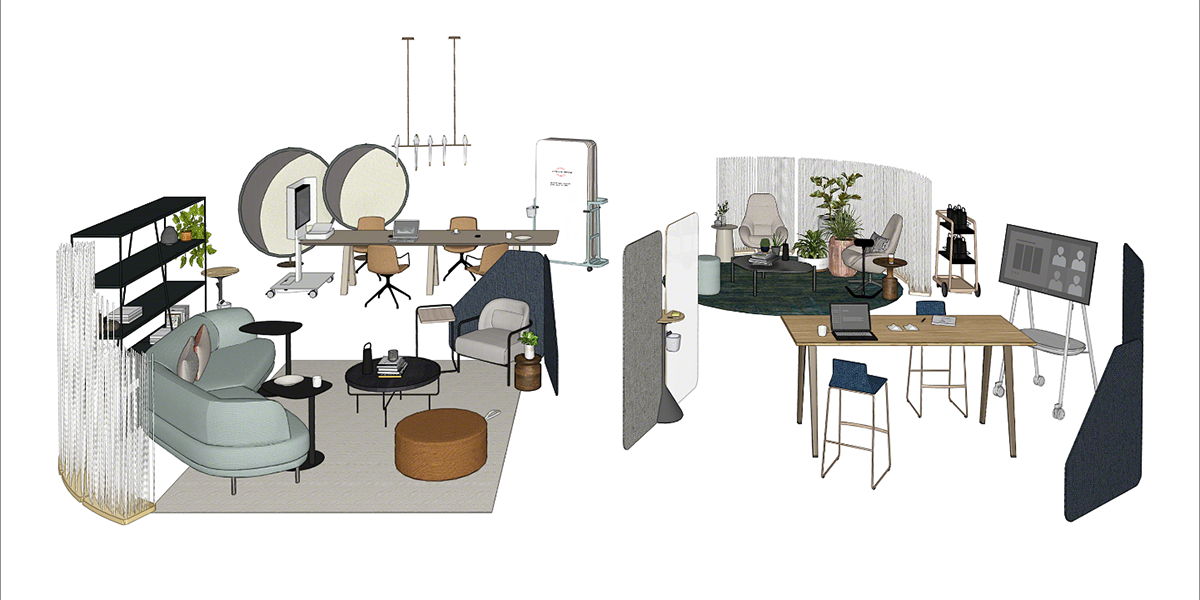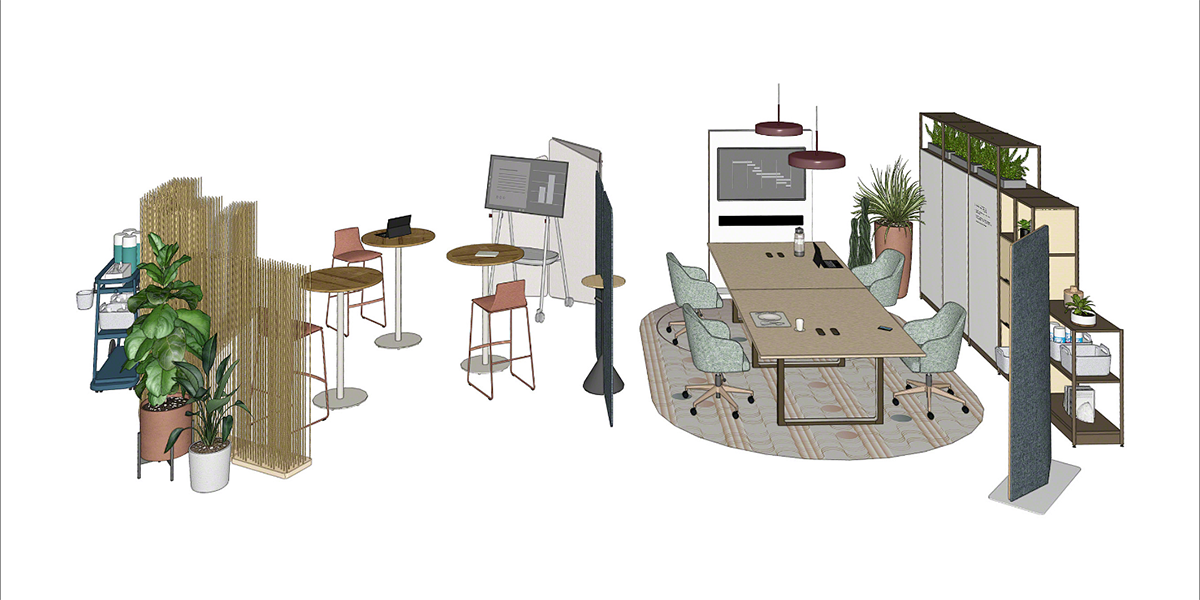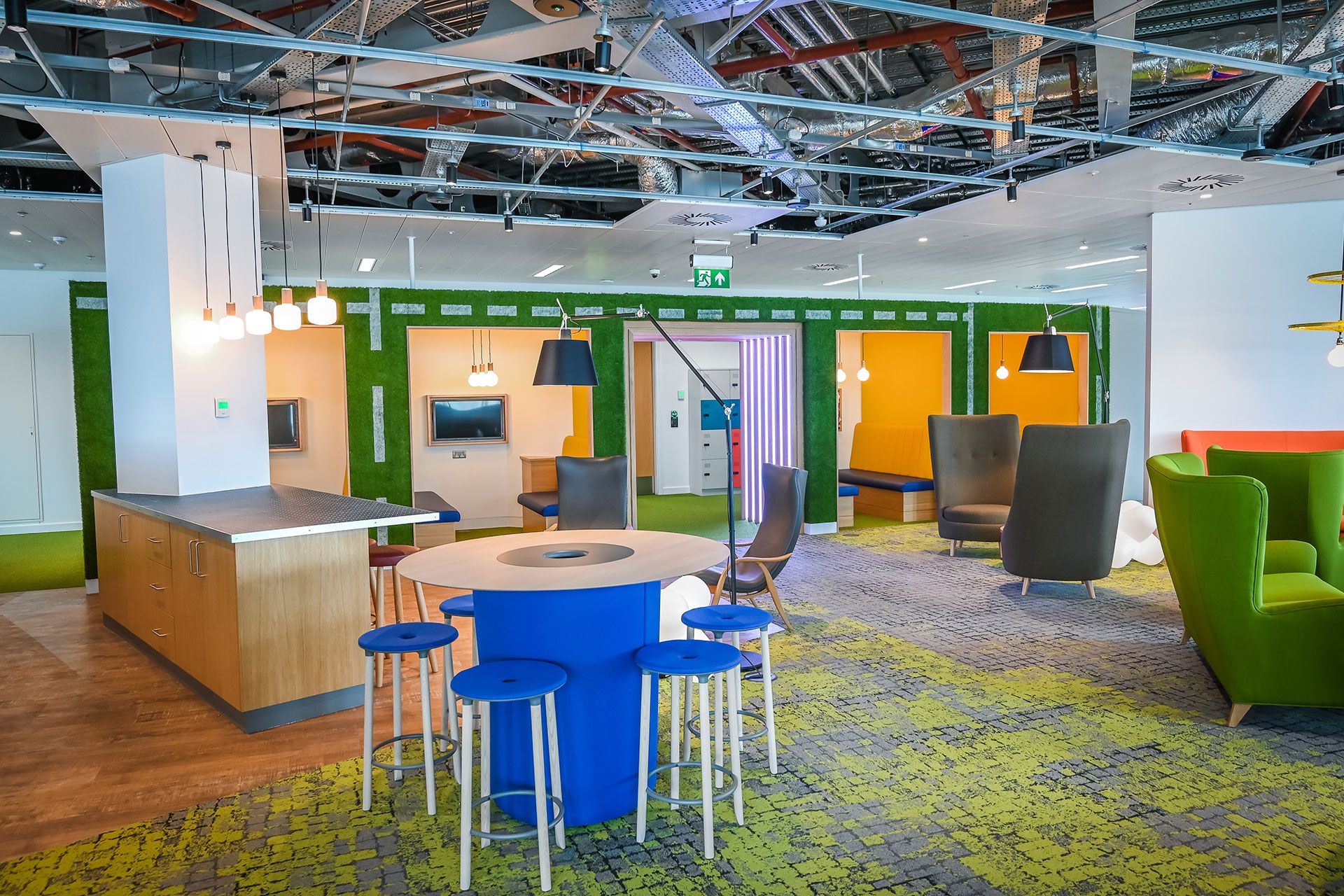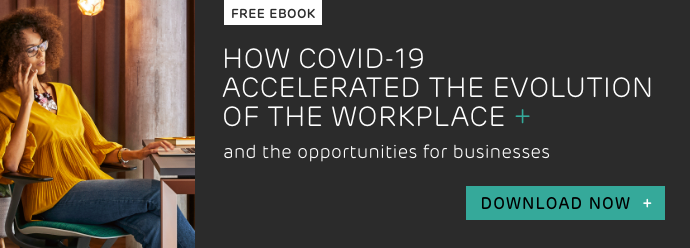Companies that foster a sense of belonging in their workforce increase their loyalty, productivity and happiness. Coming back to a workplace designed with community in mind can help galvanise worker engagement and bring long term benefits to your business.
According to the latest Steelcase research:
“The top two reasons people say they want to be back in the office are to connect with colleagues and feel a sense of shared purpose with the organization.”
And that shouldn’t be surprising - the urge to form social bonds and work together towards a common goal is a fundamental human need.
As we come back together to the office many of us are hoping to recapture this feeling of connection and make our professional lives feel more worthwhile. We’re all hoping that we can find ways to work better and in a more rewarding way.
“Meaning and purpose are both attributes of a strong community, along with trust, inclusivity and resilience. In turn, a strong community correlates with key business outcomes — engagement, productivity, innovation and retention. The workplace can intentionally foster meaningful interactions and signal that change and adaptation are part of the culture and something to be embraced.”
Here are 3 ways office design can help build that sense of ‘belonging’
1.Design for connection
Transforming working spaces into more social hubs can help workers overcome their worries about returning to an office environment that has become ‘clinical’ and over-policed in response to Covid.
If we’re going to ‘return to better’, our workplaces need to offer stimulating and inspiring areas that promote ideation and creative problem-solving. Otherwise, why come in at all?
The work lounge is a design idea inspired by the dynamics of socialising, but optimised to help us shift between collaborative and individual working scenarios.

In the Work Lounge concept (above):
- Large, comfortable sofas encourage workers to safely distance even as they discuss ideas, collaborate or catch up on a social level.
- Screens can be pulled around individual armchairs to provide privacy for heads-down work when required.
- There’s ample space to perch on long benches, to share a coffee or a bite to eat.
- There are places to plug in a lap top and work on documents and presentations.
- Around the round room are moveable screens for acoustic shielding, as well as pinning stuff to and scribbling on.
- There is also moveable tech (interactive screens on wheeled easels) to accommodate hybrid working with clients and colleagues who are not in the office.
This space is adaptable and welcoming. It accommodates changing working postures and enables shifts between physical and digital collaboration with as little friction as possible. At the end of the day, it can be quickly configured to support socialising and relaxing together as a team.
This space serves the needs of the team. It does not dictate particular behaviours, but encourages a sense of belonging through foregrounding comfort and collaboration.
Through scale, materiality, biophilic design and spatial division we can use the lounge concept to encourage safe, yet social interaction that maximises productivity.
2. Design 'third spaces'
Steelcase has found many businesses with dedicated ‘cafe areas’ have traditionally under-used the space. A 'cafeteria' is often an area in an office equipped with no more than bistro tables and chairs, Steelcase argue that with a little investment and some creative furnishing these spaces can be used to maximise opportunities for connection with purpose.
Steelcase is proposing businesses repurpose existing ‘cafe spaces’ in their premises to turn them into high functioning ‘third places’ - somewhere between work and the social realm where more informal connections across team and office hierarchies are possible.
There is no doubt these third spaces are sorely needed in many office buildings. As one participant in the Steelcase Future of Work study - told the researchers
“What I look forward to is having lunch with my co-workers. I had a group that I normally ate with. Also, mentorship is very important to me — so I was consistently seeking out people to go to coffee with. It’s much harder to have a Zoom coffee chat.”
Could a humble lunch room be re-imagined as a location for these kind of vital interactions - a place to go for coffee but to break out into a collaborative working session as the mood takes us? A place where teams can congregate to make announcements, share a team lunch, celebrate achievements or just mark the end of the working week?
Feeling like you ‘belong’ in a company depends on being able to experience these kind of shared moments. And if we make the right design decisions these experiences can be supported throughout the day

The 'Lunch Retreat' concept allows your people to adjust the space to provide the level of comfort they require.
- Diverse settings to support dining as well as socializing or collaboration.
- Space can easily flex to support two separate groups, or one larger group
- Moveable screens to provide visual, acoustic and territorial privacy
- Mobile catering 'wagons' provide flexible catering options
Design with vision
In the Steelcase research the second most pressing reason for UK workers to return to the office was to reconnect with the organisation itself, and its sense of ‘place and purpose’ in the world.
Design can be a powerful way to remind us of ‘what we’re doing here’ as a business. In the HBR's detailed analysis of the Hybird Workpace, they discuss how the workers at the International Olympic Committee are gravitating back to their building following lock down because it is their ‘social anchor’ as a company. It is a space for serendipitous encounters, with a large airy, atrium that represents the co-operative values of their organisation (both physically and visually)
“The great central staircase—shaped like the five rings of the Olympic symbol—forces people from different departments to encounter one another on the way to and from their desks and encourages them to stop and talk… These spaces around the stair case… are full of sofas and coffee corners… this human element is at the heart of what we do.”
A sense of identity and location can be a way of instilling a feeling of belonging. Think of the open plan HSBC building in Sheffield that draws inspiration from its surrounding countryside and its mission to build a 'total team approach' in everything it does.

Workers don't want to return to identikit offices or clinical spaces designed just for Post-Covid compliance. Instead, we would argue it is more essential than ever that workers coming into offices know why they are there and what that really means.
Design that expresses a company’s unique personality, mission, and brand values can help staff feel connected and purposeful as they walk through their office doors.
A sense of belonging is central to human experience. It can be a galvanising force in an often bland corporate world.










